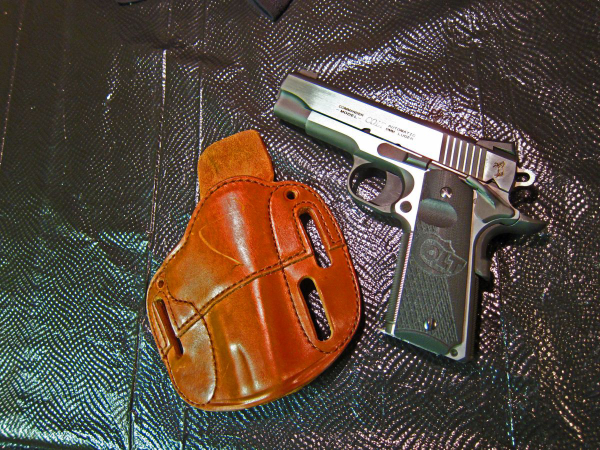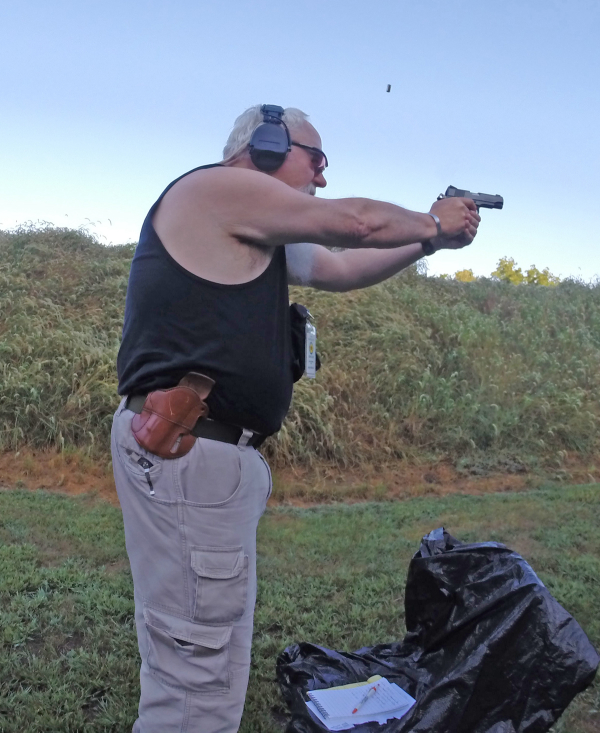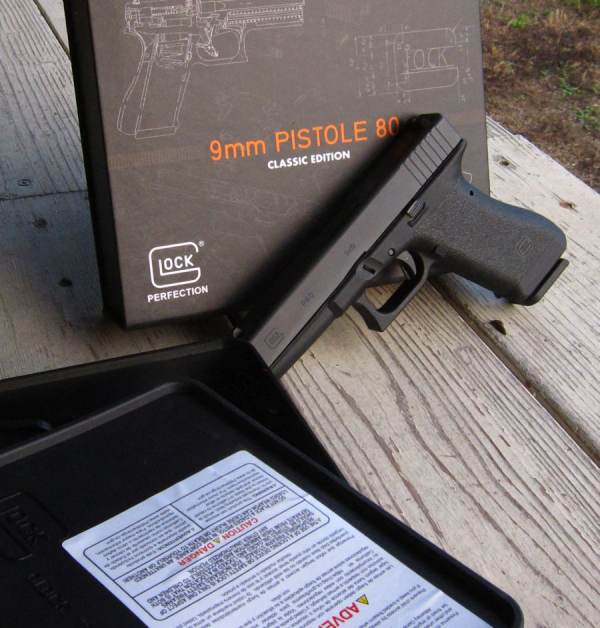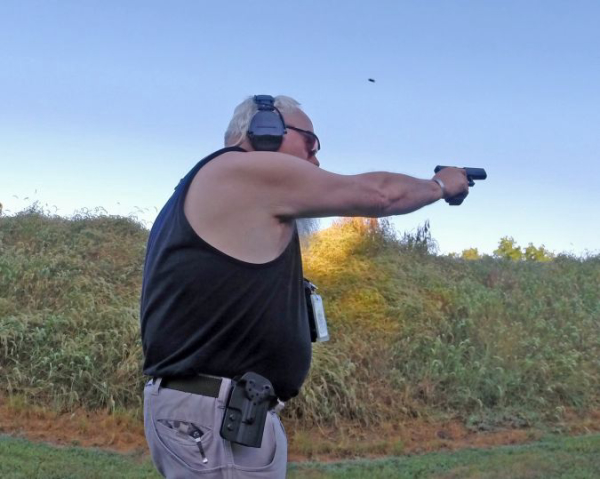
As I prepared to return the loaner Colt Commander – this the Combat Elite Commander in 9mm – I realized I hadn’t shot the Comparative Standards with it. As it’s a high level 1911-style pistol, that’s a major data point I’d be passing up.
The gun is a 34-ounce stainless steel 9-round 9mm 1911-format pistol with bilateral safety levers, 25 LPI checkering on the front strap, night sights and G-10 “Colt”- marked stocks. The finish – “TT Elite” – is best described as a blackened stainless that’s had the flats of slide and frame brushed. This renders the flats in silver, while the top, bottom, rear (only) cocking serrations, and laser-engraved lettering remains PVD coated. I like the look.
I elected to give it a whirl using the Simply Rugged DEFCON 3 holster – a close-fitting pancake-style design- and Hornady American Gunner 124gr. XTP +P. The magazines I used included the provided 9-round magazine in addition to Brownells 10-round and Wilson Combat 10-round magazines.
My use of single-stack steel single action autos has faded over recent decades during the ascendency of the polymer striker-fired auto.
This was reflected in the shooting results. I found that the problem wasn’t precision – it was time. While there’s “no stopwatch in a gunfight,” I recently saw a response: the length of time you have to sort out a fight is the rest of your life …
I found my draws to the first hit were miserably slow; it wasn’t the holster or the pistol – it was a failure in “sighting by feel,” a phrase coined by the late Ron Avery – a very fine, fast and accurate shooter. My ten-yard pair was a quarter second slow – a lifetime – and the seven-yard failure drill was about on point. As I continued, I seemed to get into the swing of things – too late to help.

I changed ammo (to the excellent Hornady Critical Defense 115 FTX) and put up an IDPA target and tried the IDPA “abbreviated” classifier. My target is from the “pre-head circle” era, so I made one with a roll of tape and a permanent marker. It’s not official but I was just trying to see where I was with the fancy Colt.
I contrived three penalties and, based on my near-two seconds per shot for three of the strings, ended up in mid-Marksman territory.
It’d take some work to dig out of that hole – and it’s a reminder that it’s worth the effort to practice.


While I was about it, I grabbed the Lipsey’s exclusive GLOCK P80, a Comp-Tac QB-1 range holster, Comp-Tac magazine pouch and some Hornady 135 +P Critical Duty FTX to try the classifier again. This time, I came in only slightly faster though still in Markman SSP territory. With one less penalty and slightly faster times on a pair of strings, it made little difference.
Why shoot two such completely different guns? I’ve been in double-stack polymer striker fired service guns since 2001 – putting my experience with guns like that slightly longer than my time with any other single weapon type (excluding snub revolvers). While the Colt is quite accurate and very well appointed in terms of sights, checkering and stocks – to say nothing of the superb trigger – I just have to find my place with the slimmer vastly different system to really increase my score.
Simply stated, it wasn’t the gun, the holsters or the ammo; it’s the shooter.
We can sum up the Colt Combat Elite Commander 9mm though with the observation that the early pair of failures to go into battery never again presented, there were no other stoppages of any kind. The gun just runs. It’s a nice heater.
If you’re a steel-single-action-auto kind of shooter, the Colt Combat Elite Commander deserves a close look.
-- Rich Grassi